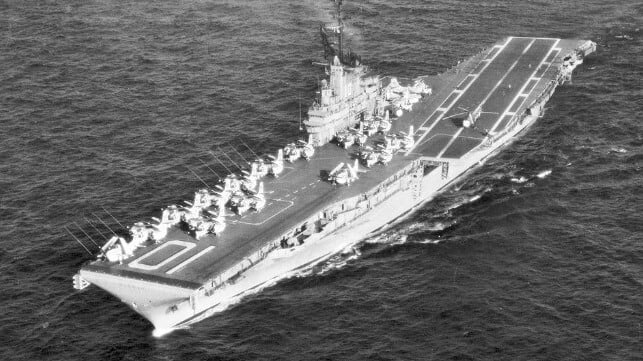Years-Long Pollutant Cleanup Completed for Historic Carrier USS Yorktown

A famed U.S. World War II aircraft carrier is all set to continue attracting tourists at the Charleston Harbor in South Carolina after contractors completed a herculean task of removing toxic pollutants, a project that took two years and cost $31.6 million.
The USS Yorktown, a National Historic Landmark moored at Patriots Point in Charleston Harbor, had become a ticking environmental time bomb owing to years of corrosion of her hull. Two years ago, the state government made a decision to remove gallons of hazardous fuel, oil and contaminated water from the ship’s belly to avert a potential disaster, protect the environment and ensure the ship remains a popular tourist attraction.
Gov. Henry McMaster, who issued an executive order for the clean-up in 2022 in order to preserve the ship’s history, is now hailing the completion of the task after salvors managed to remove about two million gallons of toxic waste and nine tonnes of asbestos.
The clean-up was carried out in two phases, with phase I involving the removal and safe disposal of 569,000 gallons of oily water and 8.88 tonnes of sludge/mud. It also involved the cleaning of 18 tanks and four compartments while 47 tanks were dewatered and 90,260 of fresh water transferred internally. Also removed and disposed were 4.5 tonnes of asbestos waste.
In the second phase, salvors from Hepaco LLC, Shipwright and Isla Maritime managed to remove 1.4 million gallons of legacy residual fuel and the remaining asbestos.
McMaster reckons the removal of the pollutants has averted a catastrophe at the Charleston Harbor had the material leaked. Apart from destroying marshes and estuaries, a spill would have resulted in massive deaths of marine life and risks to industries that support thousands of jobs.
“The USS Yorktown was a ticking environmental time bomb, with the risk of disaster increasing each year, and now it has been safely and successfully defused,” said Gov. McMaster.
Commissioned in 1943, Yorktown is one of 24 Essex-class aircraft carriers built during WWII for the U.S Navy. The aircraft carrier was built in a record 16 months at Newport News, Virginia, and was initially named Bonhomme Richard but was renamed Yorktown after the previous USS Yorktown (CV-5) was sunk at the Battle of Midway.
During WWII, the ship participated in the Pacific offensive that began in late 1943 and ended with the defeat of Japan in 1945, a conquest that went on to earn the ship the famous title of the “Fighting Lady”.
Though initially built as an aircraft carrier, she was converted in 1950 to an attack aircraft carrier, something that saw the addition of blister tanks that were faired into the existing hull and an angled deck was added in 1955. Apart from WWII, Yorktown also participated in the Vietnam War, and is remembered for picking up the Apollo 8 crew and spacecraft in 1968 after the first human mission to the moon.
Yorktown was decommissioned in 1970 and donated to the State of South Carolina in 1975 for use as a museum ship. She is maintained by the Patriots Point Development Authority and serves as a tourists’ attraction at the authority’s naval and maritime museum facility, which receives more than 300,000 visitors annually.
